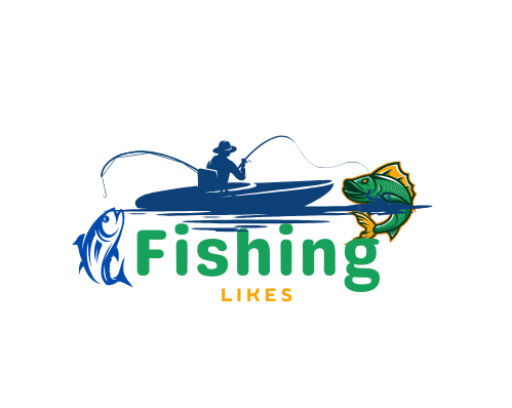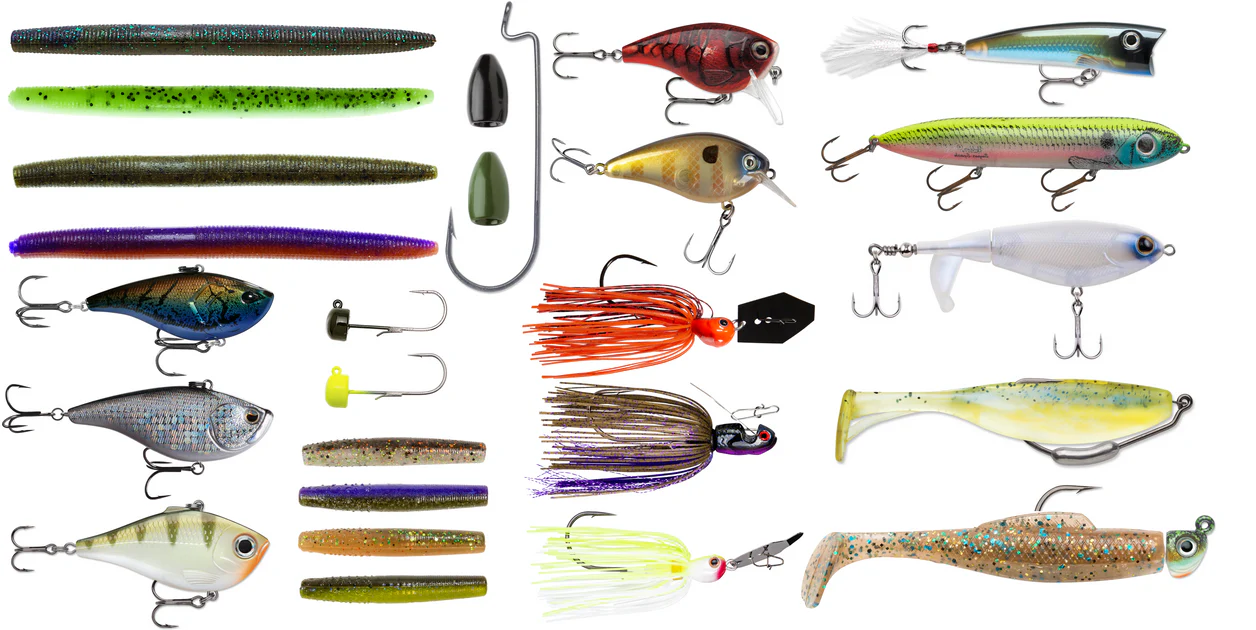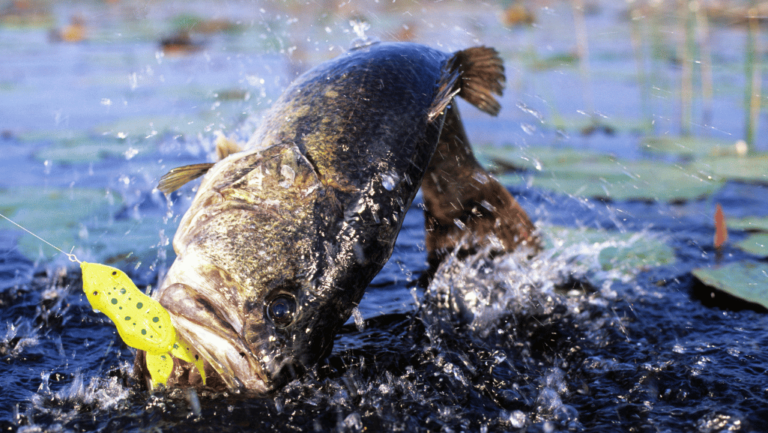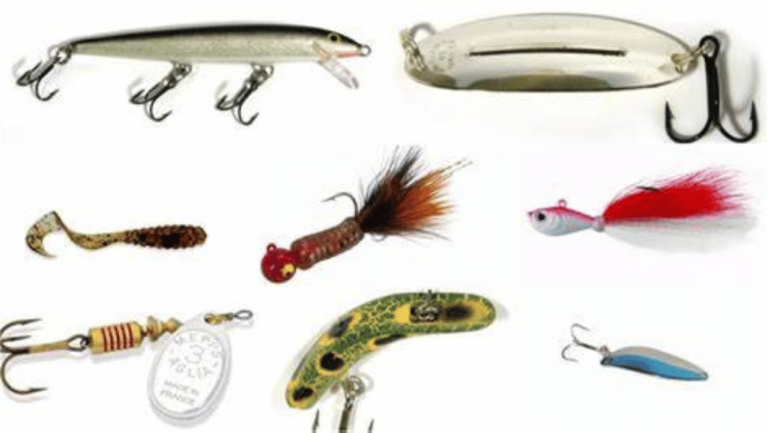The bass fishing season is almost here, and anglers get ready for big catches. They pick the best baits for spring bass, focusing on ones perfect for the season’s start. Among these, lipless crankbaits stand out. They move in a special way to get even the pickiest fish to bite. In clear water, go for the quiet kinds to sneak up on bass. But in dark or windy places, loud rattles can be better to grab attention. Using these baits slowly can make them even more tempting to bass early in the year.
Looking to reel in big fish? Try using lipless crankbaits that look like crawfish. They work well in rivers, on points, or under the sun. These baits trick bass into thinking they’re real food, giving you a better chance. To really make the most of early spring fishing, make sure you’ve packed these important lures. They can lead you to the best bass fishing spots.
Key Takeaways
- Organize your tackle box with the best spring baits for bass to maximize your odds of a trophy catch.
- Use silent lipless crankbaits in clear waters to avoid spooking fish.
- Deploy lipless crankbaits with loud rattles in stained water or windy conditions.
- Implement a slow and steady retrieve to trigger strikes from early spring bass.
- Target river channels, secondary points, and sunny banks with crawfish-colored lipless crankbaits.
Understanding Spring Bass Behavior
As spring starts, bass act differently. To catch more fish, it’s key to know how they change. They move to find the right temperature and food. This means anglers need to fish in specific ways to do well.
Bass Migration Patterns
In the spring, bass move from deep to shallow waters. They do this to find the best spots to lay their eggs. These fish use underwater paths like canals and ridges. Anglers should look for these paths to find more fish.
Impact of Water Temperature
The rise in water temperature affects bass movement and eating. When it gets warmer, bass eat more to get ready to spawn. This makes them easier to catch. Fishermen need to watch the water’s heat to change how they fish.
Pre-Spawn Feeding Habits
Before they spawn, bass eat a lot. They look for food everywhere. Anglers can catch more by using the right bait, like plastic worms or stick baits. Watching the water’s temperature and how bass act helps catch more.
Best Locations to Fish in Spring

The change of seasons brings unique chances for bass fishing. Finding the right fishing spots can really up your game. During spring, bass are on the move, going from cold, deep waters to warmer, shallow areas.
Targeting Shallow Flats
Shallow flats warm up first and attract lots of fish. Before they spawn, bass hang out there for warmth and food. To catch more bass, anglers should use baits and lures like tubes and jigbaits with crawfish designs
. For more tips, check out this guide.
Fishing Rocky Areas and Docks
Places with rocks, docks, and other structures get warm and draw in bass. Use baits that stay still in water, like suspending jerkbaits or lipless crankbaits, here. These work great.
Finding Bass in Emergent Vegetation
Vegetated areas are also great for catching bass in spring. They give bass places to hide and find food. Slow-moving lures work best in the cooler early spring. Try fishing on the south side of lakes, where the sun warms up the water quickly.
Finding bass in spring is all about knowing where they like to be. This includes shallow water, rocky spots, docks, and plant-filled areas. Add using the right baits and know-how for each spot, and your fishing can be very good.
| Fishing Location | Key Features | Recommended Lures |
|---|---|---|
| Shallow Flats | First warming areas | Tubes, Jigbaits |
| Rocky Areas and Docks | Heat absorption | Suspending Jerkbaits, Lipless Crankbaits |
| Emergent Vegetation | Cover and hunting grounds | Slow Presentation Lures |
Lipless Crankbaits for Early Spring
In early spring, every angler knows lipless crankbaits are essential. They work well in all types of water conditions. If the water is murky or the wind is up, their rattling sound can attract bass from far away. It’s important to use different ways to retrieve these lures for the best results.
Effectiveness in Different Conditions
Lipless crankbaits are available in several sizes. You can find them in 1/4-ounce, 1/2-ounce, and 3/4-ounce range. The 1/2-ounce is great for casting far and staying near the surface. For deeper spots, go for the 3/4-ounce. For early spring, colors like Rayburn Red and Toledo Gold are top picks. In murky or dark water, Gold Shiner and Copper Shiner are best.
Retrieval Techniques
Varying how you reel in lipless crankbaits is key to catching more fish. Besides the usual steady reeling, try lifting and dropping them or rolling them slowly. Changing how fast you reel can match what the fish like, adding to your chances of success.
Using Crawfish-Colored Crankbaits
Crawfish-patterned crankbaits are great for early spring. They look like what bass eat a lot, so bass are drawn to them. Try using them in river channels and on points. As the season starts, these spots warm up first and fish love them. Brands like BOOYAH’s Hard Knocker have good crawfish designs. They’re a must for your tackle box.
| Crankbait Size | Fishing Depth | Recommended Conditions |
|---|---|---|
| 1/4-ounce | Extra Shallow | Clear water, shallow flats |
| 1/2-ounce | Shallow | Stained water, windy conditions |
| 3/4-ounce | Deeper | Dark days, tannic waters |
Suspending Jerkbaits: A Top Choice

For bass anglers, suspending jerkbaits are a top pick, especially in cold water. They look like dying or cold baitfish, which bass love to eat. This makes them great for catching predatory bass.
Understanding Jerkbait Movement
Suspending jerkbaits move in a special way that bass find hard to ignore. Anglers can use their rod to mimic a struggling fish. This is a great trick for catching bass, especially in the spring when they’re hungry. For more info on this technique, check out this article on jerkbait movement.
Recommended Retrieval Patterns
How you bring in the jerkbait matters a lot. A twitch and then a pause can work wonders. Change how long you pause to match what the bass are looking for. As an example, Dave Lefebre used these methods to win big at the 2016 Bassmaster Angler of the Year Championship.
Choosing the Right Color and Size
Choosing the right jerkbait includes picking the right color and size. Lefebre believes matching the bait’s colors to its surroundings is key. Use natural colors in clear water and brighter ones in murky water. The size should also match the local baitfish. This makes your gear more effective. Good gear selection leads to better chances of catching bass.
| Jerkbait Model | Use Case | Color Selection |
|---|---|---|
| Rapala Shadow Rap Deep | Cold water, slow sink | Lifelike baitfish patterns |
| Storm Twitch Stick | Spring, shallow waters | Natural and bright colors |
| X-Rap Deep | Prespawn, deeper waters | Natural patterns with feathered rear treble |
To be great with suspending jerkbaits, master their movements, retrieval patterns, and color choices. Using the right types for the conditions at hand is key. With smart jerbait selection, you’ll boost your chances of success when fishing for bass.
Early Spring Bass Lures: Finesse Jigs
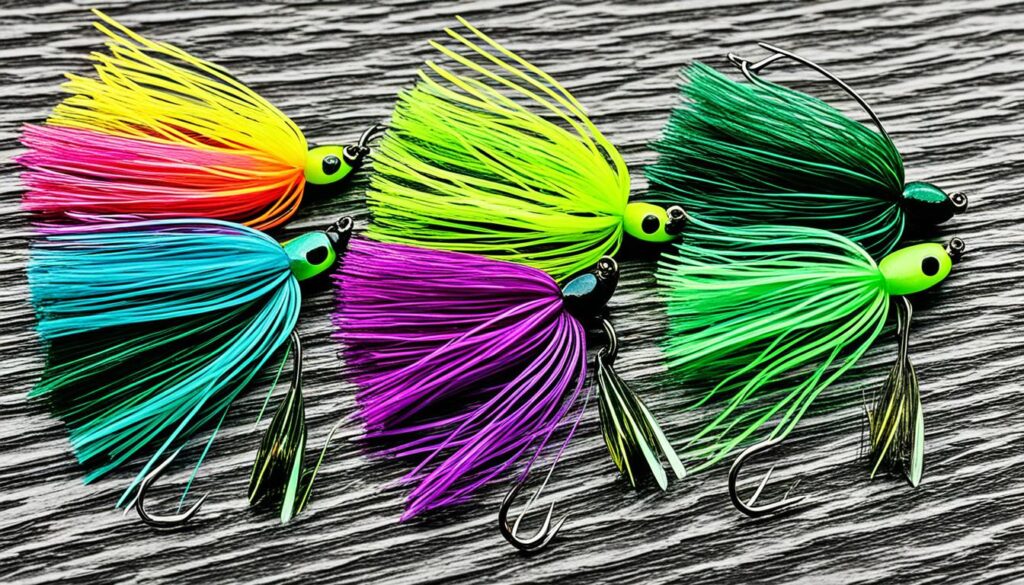
Finesse jigs play a key role in catching bass, especially when fish are not moving much. They’re smaller and this appeals to picky bass.
Benefits of Downsized Jigs
Spring sees smaller jigs shine for a few reasons. Their tiny size looks like real food, which is what bass want this season. They work really well in clear water or busy fishing spots.
Best Areas to Use Finesse Jigs
Look for places with hard things like rocks and docks. They heat up quick and draw in bass looking for warm spots. Also, spots close to where fish lay eggs can be great places to fish.
Recommended Jig Colors for Different Waters
For clear water, try green pumpkin or brown jigs. They look natural and won’t scare fish. In murky waters, go for brighter colors like orange. Bass see these better and are more likely to bite.
Bladed Jigs and Spinnerbaits Strategies
Bladed jigs and spinnerbaits are great for covering a lot of water. This is key when fishing for bass before they spawn. Their flexibility is crucial, ensuring you can catch fish even when they’re not grouped together. Both of these are must-haves for every angler’s tackle box.
How to Cover More Water Efficiently
These lures are perfect for casting far and wide. This is important during the pre-spawn when bass are spread out. To use them well, cast far and reel at a medium speed. Sometimes, speeding up your reel can make fish more interested too. It’s also good to use a fast reel to get the most out of these lures.
Choosing Trailers for Bladed Jigs
The kind of trailer you pick for bladed jigs is crucial. Trailing lures like the Yamamoto Zako or 10,000 Fish Yoto Worm can up your chances of getting a bite. In clear water, go for natural colors like green pumpkin. In murky water, choose darker or brighter tones. Soft tails and twin-tails add extra movement, which can attract more fish.
Best Techniques for Using Spinnerbaits
Spinnerbaits need the right approach to work well. Change your retrieval speed and depth to match the conditions. Fish slower in cold water and faster in clear water. This mimics what the fish are used to seeing. Spinnerbaits work from shallow to deep water without trouble. Adapting to the setting boosts your chances of a successful fishing trip.
Soft Plastics: Versatile and Effective
Soft plastics are great because they work in many bass fishing methods. Anglers can use Texas, shaky head, or Carolina rigs depending on their needs. This flexibility helps them catch more fish by adjusting to the bass’s behaviors and where they live.
Top Rigging Options for Soft Plastics
How you set up soft plastics can make a big difference in your bass fishing. The Texas rig is best for fishing in heavy vegetation, while the shaky head works well when you need to finesse. The Carolina rig lets your bait move freely and works great in deeper water. If you pair these setups with top-quality soft plastics like the Gary Yamamoto Senko, you can increase your chances of catching a big one.
Benefits of Crawfish Imitations
Bass love to eat crawfish, especially in spring. That’s why soft plastics that look like crawfish work so well. For example, the Strike King Rage Craw looks real and gets bass to bite. Use these around rocks or in clear water for the best results.
Fishing Soft Plastics in Clear Water
Bass fishing in clear water means you need to be sneaky. Pick soft plastics that look like what the fish normally eat. The Zoom Super Fluke on a weightless hook will look natural in the water. Also, use thin fishing line and be very careful when you cast. This can help you catch more fish in clear water.
Exploring the Power of Drop-Shot Rigs
Drop-shot rigs are a must-have for spring bass fishing. They are simple to use, making them great for any angler. This bass fishing technique involves a weight at the end of the line. Above that, anglers attach a hook and bait. It’s perfect for fishing at different depths. Baits like crawfish or finesse worms work well. They catch bass by presenting bait in a subtle yet accurate way.
For drop-shot rigs, it’s best to use 12 to 25 lb fluorocarbon lines. They’re strong but still sensitive. A reel with a 7:1 gear ratio or higher is good for fishing near cover or for bed fishing. Use at least a medium wire hook to avoid it bending during strikes.
| Weight | Conditions | Cover and Depth | Baits |
|---|---|---|---|
| 3/8 to 1/2 oz | Adjusts based on cover and conditions | Shallow flats, deep ridges | Finesse worms, crawfish |
| 50- to 65-lb braid | Extreme situations | Heavy cover | Creature baits, lizards |
Power shot setups work well with 7′ to 7’6″ rods. These rods should have medium-heavy to heavy power. They should also have fast or extra-fast tips. In the spring, you can try soft plastics like crawfish and lizards. Use colors that match what the bass might eat. This improves the chances of your rig catching fish.
Anglers should try different leader lengths with drop-shot rigs. Surprisingly, most anglers don’t use wacky worms on their rigs. But pro angler John Crews uses a 4-inch Mini Magic Worm for this. This can be a unique way to attract bass.
In summary, adding drop-shot rigs to your spring bass fishing tactics can boost your success. With the correct equipment and by trying various baits and leader lengths, you increase your chances. This season, you just might catch that big bass you’ve been after.
Tips for Adjusting to Spring Weather
Spring weather can change a lot, making it hard to predict. To fish for bass successfully, be ready for these changes. Know how the weather impacts bass so you can fish better.
Tackling Cold Fronts and Rapid Warm-Ups
Cold fronts make bass slow. So, fish slowly with small baits. Use jerkbaits that look like cold baitfish for this. They move slowly, which bass like when it’s cold.
Warm spring days bring bass to shallow areas. There, use jigbaits with crawfish or grub. These lures work well at different depths. They also fish slowly, tempting bigger bass to bite.
How to Adapt Your Bait Choice
Match your bait to the weather for better fishing. Use jerkbaits on cold days, moving them in a jerky way. This imitates injured fish, which bass are more likely to bite.
For lakes with grass, try lipless crankbaits. They move with a tight wiggle and make noise. They’re good for fishing near grass where bass may be moving slowly.
As it warms up, switch to active baits like plastic worms. These work well in tough conditions. Or use tubes to find bass in larger areas. This is how you adjust your fishing as the weather changes.
Staying Flexible with Retrieval Methods
Changing how you reel can help you catch more fish. In early spring, reel lipless crankbaits steadily near plants. This can attract bass hiding in the vegetation.
On hot days, try fishing slowly with jigbaits. This can get bites from bass in shallow spots near ridges and docks. It’s good to mix up how you reel and present your baits. This makes your fishing more adaptable.
For more bass fishing tips and tricks, visit this comprehensive guide.
